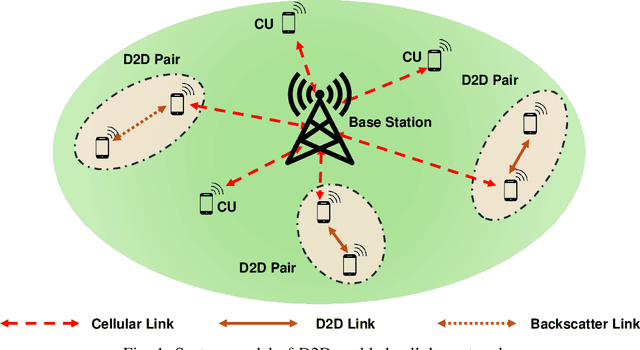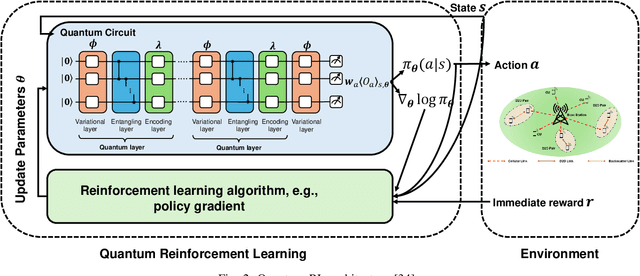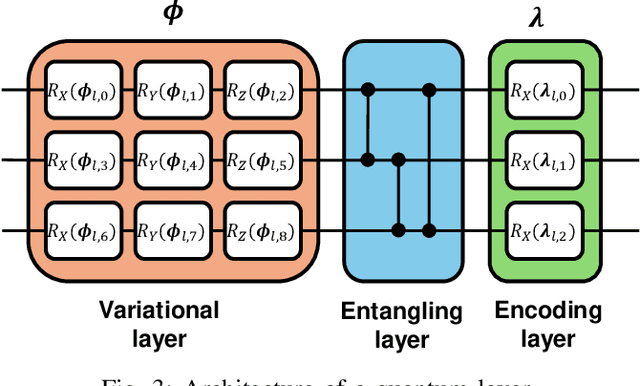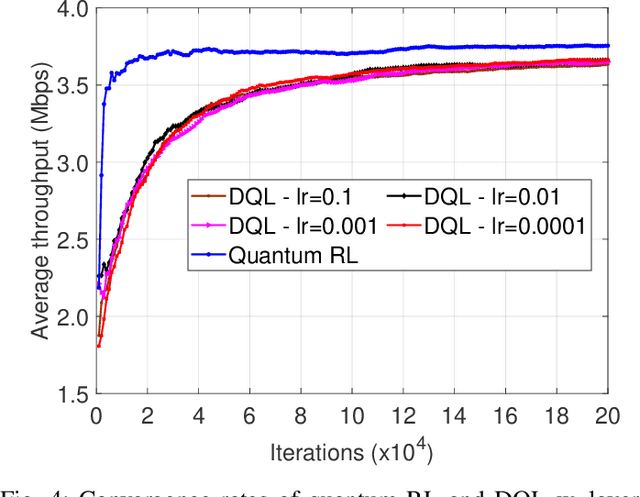Dynamic Spectrum Access for Ambient Backscatter Communication-assisted D2D Systems with Quantum Reinforcement Learning
Paper and Code
Oct 23, 2024



Spectrum access is an essential problem in device-to-device (D2D) communications. However, with the recent growth in the number of mobile devices, the wireless spectrum is becoming scarce, resulting in low spectral efficiency for D2D communications. To address this problem, this paper aims to integrate the ambient backscatter communication technology into D2D devices to allow them to backscatter ambient RF signals to transmit their data when the shared spectrum is occupied by mobile users. To obtain the optimal spectrum access policy, i.e., stay idle or access the shared spectrum and perform active transmissions or backscattering ambient RF signals for transmissions, to maximize the average throughput for D2D users, deep reinforcement learning (DRL) can be adopted. However, DRL-based solutions may require long training time due to the curse of dimensionality issue as well as complex deep neural network architectures. For that, we develop a novel quantum reinforcement learning (RL) algorithm that can achieve a faster convergence rate with fewer training parameters compared to DRL thanks to the quantum superposition and quantum entanglement principles. Specifically, instead of using conventional deep neural networks, the proposed quantum RL algorithm uses a parametrized quantum circuit to approximate an optimal policy. Extensive simulations then demonstrate that the proposed solution not only can significantly improve the average throughput of D2D devices when the shared spectrum is busy but also can achieve much better performance in terms of convergence rate and learning complexity compared to existing DRL-based methods.
 Add to Chrome
Add to Chrome Add to Firefox
Add to Firefox Add to Edge
Add to Edge